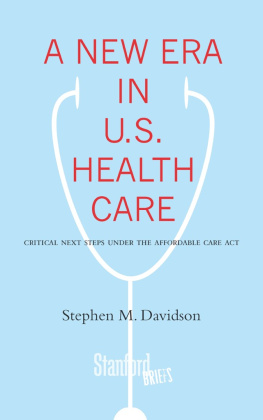New Mexico 2050?
A Prefatory Poem
Hakim Bellamy
New Mexico has been called
lots of things
by the Upper 48.
My favorite
is recession proof.
Like some sort of backhanded condiment,
like vinegar, when I ordered chile,
like drought, instead of desert,
like climate change for dinner
instead of rain for breakfast.
But mean
is not what they mean.
When poor is the new normal,
you cant feel the economy flatline.
Just like you couldnt feel it
when it was booming.
Just like the bottom of the ocean
unmoved by the waves.
What they meant
is irrelevant,
even insignificant.
Because we take everything
as a compliment.
Because at 2050,
with the oldest state capital in the country,
we look damn good for our age.
Compared to their Dow Jones Average
we are finally exceptional,
breaking the curve
one border at a time.
36 years from here,
New Mexico will still be exotic to others
and enchanting to us.
Well still be inventing
new names to call ourselves.
Still be creating new races
every monsoon season of love.
New Mexico will still be magic,
Like a horizon-taut canvas
making something out of nothing.
Pulling a rabbit out of the mesa
waiting a sign, with both ears
to the sky.
Nothing under its sleeve
but sacred heart ink.
Acequia Sangre underneath
its adobe-flavored skin.
Hungry for the snowpack
to finally shed a tear.
As the highways grow
wider and western than the Rio.
As the river banks
collapse like a recession
in vein.
As the scales of justice
elevate us out of poverty
instead of shackling us to it.
As the education system
weights opportunity
over place of worth.
As the sites
become more sacred,
and the sacred
becomes more scarce.
New Mexico will endure,
evolve and enchant,
as it has always done.
Under many different names...
But what about
the Nuevomexicanos ?
Preface
What Can We Be? What Will We Be?
Fred Harris
The past is prologue. True. And so is the present . But in New Mexico, neither of these is necessarily destiny.
A local announcer once opened the great annual Montana Crow Indian Fair Rodeo with the words, Ladies and Gentlemen and all you white people, we have cowboys here tonight from all over the worldand many other places!
Well, Im not a cowboy exactly, not an Indian either, but Ive been nearly all over the world, and many other places, and Ive never found any place I like as much as New Mexico. Thats the truth.
Weve got our problems. Everybody knows that.
And maybe people say that weve made our own bed. But we dont have to lie in it. The problems we have here in this wonderful state were by and large made by people. And they can be solved by people, too. Thats what New Mexico 2050 , the book from which this text is taken, is about.
A blueprint for New Mexicos future.
A handbook for New Mexicos leaders and public officials, present and potential.
A textbook for New Mexicos students.
A sourcebook for New Mexicos teachers and researchers.
A hymnbook for proud New Mexicans who want our beloved Land of Enchantment also to become the Land of Opportunity, fully and for all.
That, I am sure, is what John Byram, the dedicated and farsighted director of the University of New Mexico Press, had in mind when he asked me to organize, produce, and edit New Mexico 2050 . And thats what I, too, had in mind when I agreed to take on the task, after adding in my own mind a theoretical subtitle for the book: What Can We Be? What Will We Be?
With a grant (for which were most grateful) from the McCune Foundation to assist with project expenses, I set out to find recognized New Mexico experts in each subject field.
And I found them: our contributors. All of us went to work. And it has been a labor of love.
New Mexico 2050 an honest book. I asked the contributors for each chapter, first, to be descriptive to say frankly and plainly what the present situation in New Mexico isabout the economy, for example, or the environment. And they have done that. They tell what our liabilities are, of course. But they also tell what our assets are.
New Mexico 2050 is a courageous book. I asked the contributors for each chapter, next, to be prescriptive to say fearlessly what we need to do in New Mexico to make things better. They have done that, too.
And New Mexico 2050 is a hopeful book. I asked the contributors for each chapter, finally, to be predictive to say optimistically what the well-informed and wise people of New Mexico, and their leaders, can and will bring about in our states future. And the contributors have also done this.
Health is as important to New Mexicans as education, maybe more so. Thats why we got the most knowledgeable person we could find to write New Mexico Health and Health Care in 2050Nandini Pillai Kuehn, a committed and richly experienced New Mexican. And she deals with this complex subject with great understanding and unusual clarity.
And finallyand I should have, in fact, put this firstHakim Bellamy, the great Albuquerque poet laureate (20122014) has, in his wonderful and challenging prefatory poem, New Mexico 2050?, put a serious query to us that we undertake in this book to respond to in a sound and inspirational way.
Read on.
Note: This is an abridged version of the Preface that appears in the University of New Mexico Press title New Mexico 2050 .
New Mexico Health and Health Care in 2050
Nandini Pillai Kuehn
The health care sector in the United States and in New Mexico is on the verge of monumental change. The federal Patient Protection and Affordable Care Act (ACA) was signed into law in 2010, and the New Mexico Health Insurance Exchange, the vehicle that enables New Mexicans to purchase subsidized, affordable health insurance, moved into place in 2013.
In order to understand the full impact of the reforms and the future, it is necessary to step back a few years and describe how this system came to be. That will also provide a baseline with which to measure the changes the law prescribes and to measure the possibilities for the future.
2014 State of Affairs in New Mexico
New Mexico had for many years the second-highest uninsured rates in the nation. Most of the state is designated as medically underserved, and large parts of the state are declared rural and frontier. Access to health care is hampered by poverty, which means people cannot purchase the health insurance they need without help. Even for those with coverage, transportation to health centers is a problem exacerbated by long distances, access to specialists is poor, and there is almost no follow-up care. Table 1 summarizes population characteristics that affect health outcomes in New Mexico and the United States.









